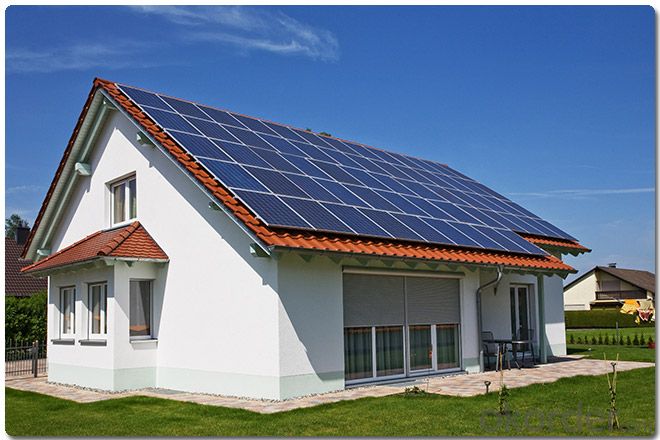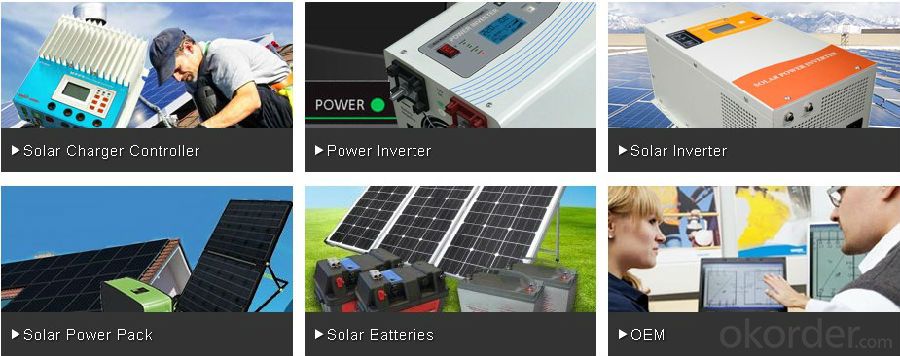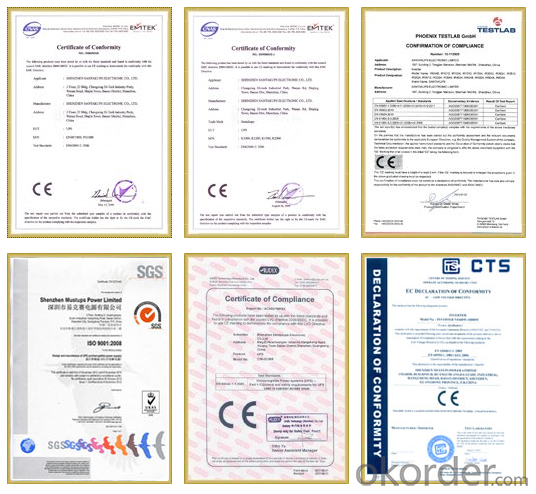Low Frequency Pure Sine Wave Inverter EP2000 Series 300W/400W Reliable
- Loading Port:
- Ningbo
- Payment Terms:
- TT or LC
- Min Order Qty:
- 50 unit
- Supply Capability:
- 1000 unit/month
OKorder Service Pledge
OKorder Financial Service
You Might Also Like
South Africa EP1000 2000VA/1200W home solar power inverter made in China
The Specification of 2000VA/1200W home solar power inverter
EP modified sine wave inverter is a combination of an inverter and a charge. It offers a smart, convenient and economic way to get AC power supply from DC source for most electrical equipment. When the AC input is available, it will switch to AC power supply and starts charging on the batteries.
The PG series converts DC power into AC power. With a continuous output and compact design, the units is ideal for running TVs, Stereos, Laptop and computers and other home appliances .PG series will automatically transfer to inverter and provide power when AC supply is interrupted unexpectedly.
The Features of 2000VA/1200W home solar power inverter
Automatic line-to-battery switchover
Selectable input voltage ranges, power inverter has wide input range:90-280Vac narrow input range:170-280Vac
Small power inverter has high efficient DC-to-AC conversion, minimizing energy loss
Rack Tower design for flexible placement
Small power inverter built-in enhanced charger 8Amps for up to 100Ah battery
Intelligent 2-stage charger control for efficient charging and preventing overcharge
Overload protection
Auto restart while AC recovery
Multi-function LED indications and buzzer alarms
Small scale and cost effective inverter for home appliance and office equipment
LED indicator of power inverter for the battery mode, AC mode, battery charging mode, overload mode and fault warning
Over 95% efficiency in AC to AC mode
Audible alarm for the low battery, overload, overcharge and fault
Full protection of power inverter against deep discharge, overcharge, overload protection, short circuit, overvoltage and under voltage (compact power inverter)
*** 10A/ 20A charge current adjustable, LCD/ LED available power inverter EP1000 1000w 220vac solar inverter***
The Specifications of 2000VA/1200W home solar power inverter :
Rated Capacity | 500VA/300W | 1000VA/600W | 2000VA/1200W |
1.Input
Models | 120V Models | 230V Models | |
Nominal Voltage | 110V/115V/120V Selectable | 220V/230V/240V Selectable | |
Input Frequency | 47Hz ~ 65Hz, 50/60Hz Auto-Sensing | ||
Efficiency | 95%(Normal Mode) | ||
Noise Filtering | Full Time EMI/RFI Filtering | ||
Over Current Protection | By Re-Settable Over Current Protector | ||
Voltage Range | 90 - 145VAC Or 170-280VAC ( Narrow Range ) 50-145VAC / 90 280VAC (Wide Range) | ||
Surge Protection | 324 Joules | ||
2.Output
Rated Power | 500va/300w | 1000VA/600W | 2000VA/12000W | |
Output Voltage | 100V/110V/115V/120V Selectable | 200V/220V/230V/240v selectable | ||
Voltage Waveform | Modified Sine Wave | |||
Crest Factor | 3:1 | |||
Output Frequency | Auto Select For 50/60Hz | |||
Regulation (Battery Mode) | 10% -18% | |||
Transfer Time | 15ms Typical 50ms Max | |||
Protection | Over Load, Discharge, Overcharged | |||
Battery Type | Lead-Acid 12V 25Ah ~ 250Ah |
Voltage | 500VA/1000VA :DC12V ; 2000VA :DC24V |
Backup Time | Depend On Battery |
Charging Method | 3 Steps Super Charge Mode |
Charging Current | 10A At Normal Line And Normal Temperature |
Protection | Over Current Protection Over Charging Voltage Protection (No More Than 15V) Deep Discharge, Overload Protection |
3.Communications & Management
Control Panel (LED Indicator ) | Ac Mode | Green Lighting |
Battery Model | Yellow Lighting | |
Battery Charging Mode | Green Flashing Every 2 Seconds | |
Over Load | Red Flashing Every 0.5 Second | |
Fault | Red Lighting | |
Audible Alarm | Low Battery | Sounding Every 2 Seconds |
Overload | Sounding Every 0.5 Second | |
Fault | Continuously Sounding |
4.Environment And Safety
Operating Environment | 0~40 Degrees Centigrade, 0 - 90% Non Condensing |
Transit/Storage Temperature | -15°C To 55°C (5°F To 131°F) |
Operating Altitude | 0 ~ 3000 Meters |
Audible Noise | 50dba |
Safety Markings | CE.FCC |
Quality Control System | ISO 9001 |
5.Physical
Dimensions(H×D×W) | 355*130*230mm | ||
N.W / G.W(Kg) | 1.6 / 2 (Kg) | 2 / 2.3 (Kg) | 2.2 / 2.6 (Kg) |
Packing | 6pcs/Carton | ||



Warrenty
provides a 1~3 year limited warranty (“Warranty”) against defects in materials and workmanship for its Uninterruptible power supply, Power inverter/chargers, Solar charge controllers, Battery Products (“Product”).
The term of this Warranty begins on the Product(s) initial purchase date, or the date of receipt of the Product(s) by the end user, whichever is later. This must be indicated on the invoice, bill of sale, and/or warranty registration card submitted to MUST-Solar. This Warranty applies to the original MUST-Solar Product purchaser, and is transferable only if the Product remains installed in the original use location.
FAQ
1. How do I decide which system is right for me ?
For protection from long outages, include a generator or solar panels in your Must solar system. Shorter outages can be handled by a battery-only system.
2. Where my system will be installed ?
Must solar systems are usually wall-mounted near a home's main electrical (circuit breaker) panel.
3. How do I install my system ?
A must solar backup inverter is connected to a home electric system , we will supply detailed installation manual and videos for our customers .
- Q:What is the role of a grid connection feature in a solar inverter?
- The role of a grid connection feature in a solar inverter is to facilitate the transfer of electricity between the solar panels and the electrical grid. It allows for the seamless integration of solar power into the existing electrical infrastructure, enabling excess electricity generated by the solar panels to be fed back into the grid, and drawing power from the grid when the solar panels are not producing enough electricity. This grid connection feature also ensures that the solar system meets the safety and regulatory requirements of the local electrical grid.
- Q:What is the maximum power output of a solar inverter?
- The maximum power output of a solar inverter can vary depending on its size and model. Generally, residential solar inverters have a power output ranging from 2 kilowatts (kW) to 10 kW, while commercial and utility-scale inverters can have power outputs exceeding 1 megawatt (MW).
- Q:Can a solar inverter be used in areas with high levels of lightning activity?
- Yes, a solar inverter can be used in areas with high levels of lightning activity. However, it is important to ensure proper installation and grounding measures are in place to protect the inverter from potential damage caused by lightning strikes.
- Q:How long does it take to install a solar inverter?
- The installation time for a solar inverter can vary depending on several factors such as the complexity of the system, the size of the inverter, the location of installation, and the expertise of the installer. However, on average, it usually takes around 4 to 8 hours to install a solar inverter.
- Q:Can a solar inverter be used in regions with extreme weather conditions?
- Yes, a solar inverter can be used in regions with extreme weather conditions. However, it is important to choose an inverter that is designed and rated for the specific weather conditions of that region. For example, there are solar inverters available that are built to withstand high temperatures, extreme cold, humidity, and even harsh weather events such as hurricanes. It is crucial to consider the environmental factors and select an inverter that is suitable for the specific climate conditions to ensure optimal performance and longevity.
- Q:Can a solar inverter be connected to a home automation system?
- Yes, a solar inverter can be connected to a home automation system. By integrating the solar inverter with the home automation system, homeowners can monitor and control their solar power production, track energy usage, and automate various energy-saving functions such as adjusting thermostat settings, turning off appliances, or scheduling energy-intensive tasks during peak solar production hours. This integration enhances the overall efficiency and convenience of managing solar energy within a smart home environment.
- Q:Can a solar inverter be used with a wireless communication system?
- Yes, a solar inverter can be used with a wireless communication system. Many modern solar inverters are equipped with built-in wireless communication capabilities, such as Wi-Fi or Bluetooth, to enable monitoring and control of the solar system remotely. This allows users to access real-time data, adjust settings, and receive notifications about their solar energy production and consumption through a wireless connection.
- Q:How does a solar inverter handle variations in solar irradiation?
- A solar inverter handles variations in solar irradiation by continuously monitoring the amount of sunlight received and adjusting the conversion of direct current (DC) power generated by the solar panels into alternating current (AC) power accordingly. It does this by employing maximum power point tracking (MPPT) algorithms that optimize the power output from the panels, ensuring maximum efficiency regardless of the fluctuations in solar irradiation.
- Q:What is the role of a data logger in a solar inverter?
- The role of a data logger in a solar inverter is to collect and store data related to the performance and operation of the solar panels and the inverter. It records important information such as the amount of energy produced, the voltage and current levels, as well as any faults or errors that may occur. This data is then used for analysis, monitoring, and troubleshooting purposes, allowing users to optimize the performance and efficiency of their solar energy system.
- Q:How does a solar inverter convert DC to AC?
- A solar inverter converts direct current (DC) to alternating current (AC) by using a two-step process. First, it takes the DC electricity generated by solar panels and passes it through a device called a rectifier, which converts the DC power into a high-frequency AC signal. Then, this AC signal is passed through an inverter circuit that converts the high-frequency AC into standard frequency AC, typically 50 or 60 Hz, suitable for supplying power to household appliances and the electrical grid.
1. Manufacturer Overview |
|
|---|---|
| Location | |
| Year Established | |
| Annual Output Value | |
| Main Markets | |
| Company Certifications | |
2. Manufacturer Certificates |
|
|---|---|
| a) Certification Name | |
| Range | |
| Reference | |
| Validity Period | |
3. Manufacturer Capability |
|
|---|---|
| a)Trade Capacity | |
| Nearest Port | |
| Export Percentage | |
| No.of Employees in Trade Department | |
| Language Spoken: | |
| b)Factory Information | |
| Factory Size: | |
| No. of Production Lines | |
| Contract Manufacturing | |
| Product Price Range | |
Send your message to us
Low Frequency Pure Sine Wave Inverter EP2000 Series 300W/400W Reliable
- Loading Port:
- Ningbo
- Payment Terms:
- TT or LC
- Min Order Qty:
- 50 unit
- Supply Capability:
- 1000 unit/month
OKorder Service Pledge
OKorder Financial Service
Similar products
New products
Hot products
Hot Searches
Related keywords






























